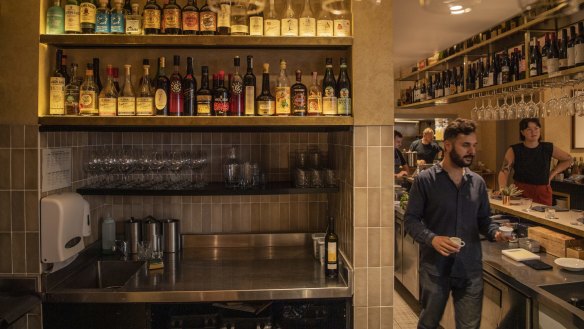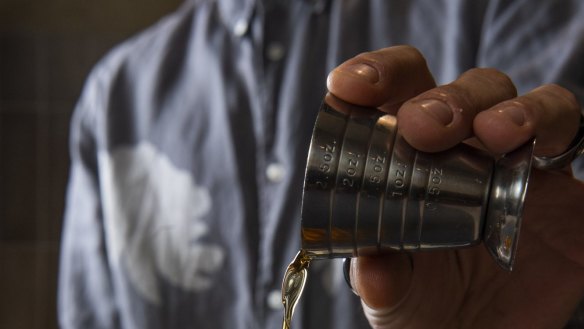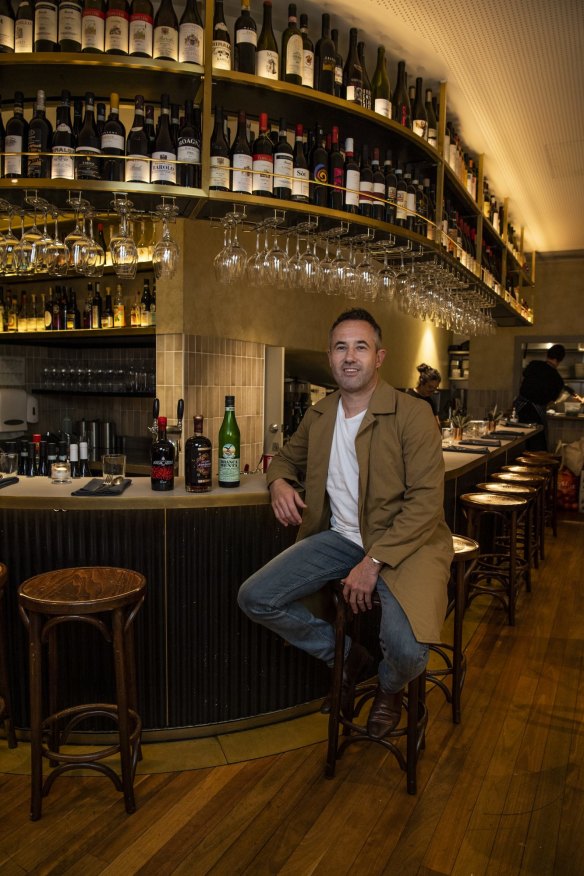From Italian community clubs to high-end restaurants: the rise of amaro in Australia

For many decades in Australia, amaro was a drink rarely found outside Italian community clubs or the hands of bartenders after a shift.
In the past five years, however, the bittersweet liqueur has gone from underground hit to high-end superstar, with an increasing number of distilleries, bars and restaurants pouring the herbal elixir. At least one chef is even making amaro at his restaurant.
"When the second Victorian lockdown hit, I thought I better do something different," says Michael Ryan, owner-chef of two-hatted Beechworth restaurant Provenance. "I always loved amaro, so I set about extracting botanicals to blend my own."

Amaro – plural amari – has its roots in ancient Rome, where nobles would drink herb-infused wine for its restorative properties.
It was sold as an elixir across Italy by the 1800s, and these days the boozy liqueur (amari can range from 16 to 40 per cent alcohol by volume) is most commonly enjoyed after a meal to kick-start digestion.
"When you finish a meal, and you're full of pasta, an amaro and espresso is the perfect combination to send you on your merry way," says Nathanial Hatwell, co-owner of Ragazzi Wine and Pasta in the Sydney CBD and online bottle shop Laneway Liquor.

Broadly, amaro is made by infusing a base alcohol with herbs and spices (usually secret), plus roots, vegetables and flowers. Flavour profiles range from smooth and sweet (see Amaro Montenegro – distilled in Bologna, Italy, and humming with orange peel, vanilla and eucalyptus) to blow-your-tongue-off bitter, such as Milan's medicinal Fernet-Branca.
Ryan has collected a "library" of 120 botanicals to draw on for his Beechworth Bitters Company amari, which he hopes to be selling in Provenance and online by early June.
Five blends make up Ryan's first line of amari, including The Orchard, a "gateway amaro" featuring local bergamot, yuzu, lime and orange, and the Up To Eleven: a bitter, bracing number with notes of mint and spruce. "That one's for the real Fernet nerds," he says.
The chef joins a growing number of Australian winemakers and distillers giving Italy a run for its euro in the amaro stakes. Adelaide Hills' Applewood Distillery pioneered the Australian amaro category in 2015 when it launched Okar and put native ingredients such as riberry and lemon myrtle in the digestivo spotlight.
In the meantime, Sydney's Poor Tom's distillery has released an "Amaro Australiano", as has Tasmanian winemaker Steve Lubiana, Adelaide's Sparkke at The Whitmore nano-brewery, and Autonomy Distillers in Spotswood, Melbourne.
"My partner and I fell in love with amaro after drinking it all over Italy," says Autonomy co-founder Ashley Sutherland. "We would ride our bikes from bar to bar, trying different varieties. There are just so many amari over there, from the big brands to the boutique regional stuff."
Sutherland launched Autonomy's amaro in late 2019. With a background in environmental science, the distiller says it was important for the amaro to be as sustainably made as possible. Botanicals are sourced from Gippsland and Market Juice beverage company supplies orange peel that would otherwise be wasted.
"I think the growing popularity of amari stems from people generally becoming more experimental with the drinks they're willing to try," Sutherland says. "There's a parallel to the rise of craft beer and gin. More Australians are exploring flavours and botanicals."
Melbourne punters interested in trying a variety of amari are well served by bartenders at Black Pearl and The Everleigh, both bars in Fitzroy, and Grossi Florentino restaurant on Bourke Street in the city.
Meanwhile, Sydneysiders should visit Mimis at Coogee for its amaro and whisky trolley, and Ragazzi, which rotates a selection of a dozen amari. Italian fine-diner a'Mare at Crown Sydney has started wheeling an amaro trolley around to guests post-meal too.
"Amaro appreciation is absolutely on the rise in Australia, but the category still has so much room to grow," says a'Mare bar manager Mattia Arnaboldi, who has fond memories of his family drinking amaro every Sunday afternoon while watching football in Lake Como.
"The education around amaro is most important. That's why we have the trolley – so we can go to each table and talk guests through the different bottles. These are drinks with a lot of big, unique flavours."
DRINKING AMARO
While it's not uncommon to order amaro at the start of a meal to stimulate an appetite, the aromatic drink is traditionally enjoyed after lunch or dinner. "If you're in Italy, most people would be serving it neat and straight from the freezer," says Nathanial Hatwell.
"However, we don't have the freezer storage space at Ragazzi to do that, so we serve 45 millilitre pours over a little cube of ice and garnish with citrus. You can stir the ice to dilute the amaro, or drink it immediately – there's no right or wrong."
Five amari to try (from sweetest to most bitter)
Amaro Montenegro, Italy 700ml, 23% ABV, $50
40 botanicals including liquorice root and nutmeg combine to make a smooth digestive with a big whack of vanilla. Try it over ice topped up with soda and a nip of brandy.
Stellacello Amaro London, UK 500ml, 23% ABV, $68
Melbourne-born bartender Joe Stella launched this heady amaro from his East London distillery in 2017. Sarsaparilla vibes give way to blackcurrants, supported by cinnamon and citrus. Perfect with a big wedge of orange.
Autonomy Native Australian Amaro, Melbourne 500ml, 30% ABV, $49
Macerated in native Australian botanicals such as lemon myrtle and pepperberry for forward sweetness and earthy bitterness. "A lot of people describe it as tasting like the Aussie bush," says Sutherland. Drink chilled and neat or with citrus over ice.
Amaro Braulio, Italy 700ml, 21% ABV, $55
Hailing from Bormio, in the Italian Alps, this is a warming amaro with top notes of spearmint and camomile. A lingering, spicy finish buzzes with cola and liquorice. Try at room temperature to explore its complexity, preferably after a long day on the slopes.
Never Never Distilling Co. Black Juniper Amaro, McLaren Vale 500ml, 29% ABV, $54
An amaro that likes to party. Made in collaboration with Black Pearl in Melbourne, three juniper components (roasted, basket and fresh) are steeped in spirit and hand-pressed for maximum flavour and extra bitterness. Ideal for waking the face up at the start of a night.
